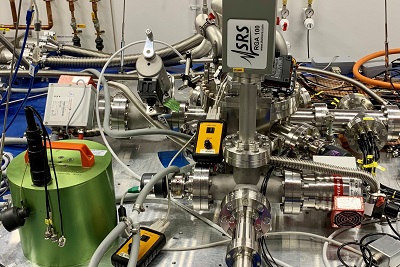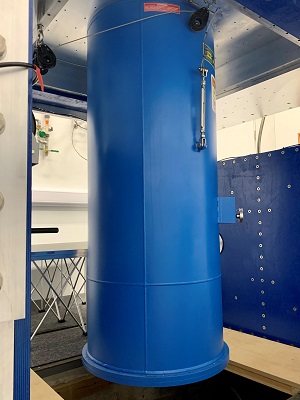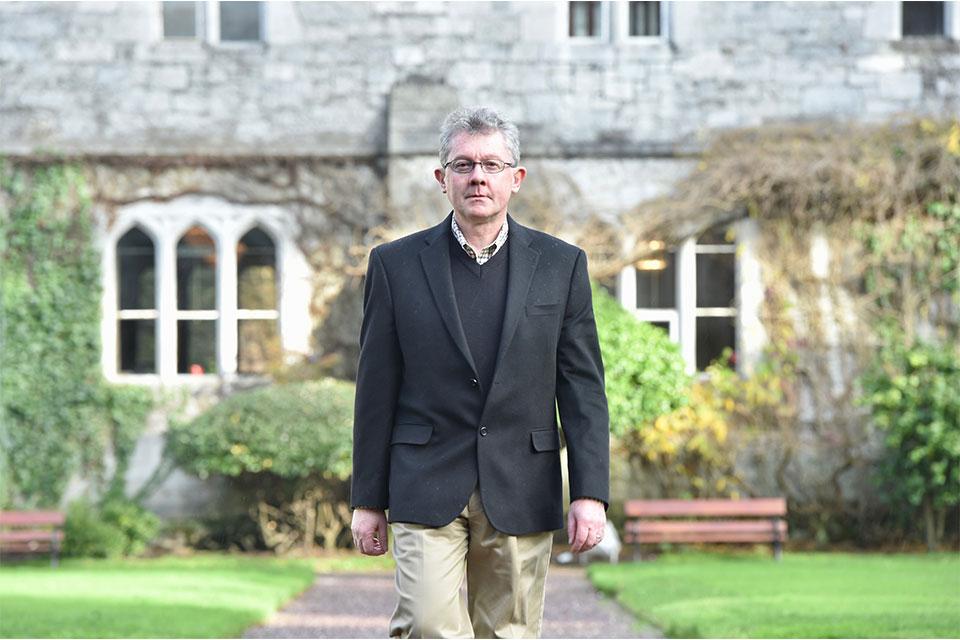Professor JC Séamus Davis has been awarded 2023 Oliver E Buckley Prize by the American Physical Society, one of the most prestigious awards in world science.
The prize recognises outstanding theoretical or experimental contributions to condensed matter physics and Professor Davis is awarded the prize for his innovative applications of scanning tunnelling microscopy and spectroscopy to complex quantum states of matter. The award is shared with Professor Ali Yazdani of Princeton University.
A quantum microscope
‘It is wonderful to receive this award – it is validation by colleagues that the slow and careful way we try to do things bears results,’ comments Professor Davis. ‘The premise of my work is straightforward enough: to use quantum mechanical processes to visualise the complex quantum mechanical matter inside advanced materials. It was often believed that such instruments could never work because laboratories couldn’t meet the specifications required – but I wasn’t trained in the scanning tunnelling microscopy field so I didn’t know it wasn’t possible! As a scientist, it is often beneficial to be a heretic: here I saw the challenge and invented the solution.’
Professor Davis’ first iteration of a spectroscopic imaging scanning tunnelling microscope that could be used to visualise quantum matter – previous scanning tunnelling microscopes had been used to study surface molecules – was built in 1999. The fourth generation has now been created in the state-of-the-art Beecroft Building at the University of Oxford.
Visualising quantum matter
Professor Davis explains: ‘To understand the concept, a useful analogy would be what is happening in astrophysics. Scientists have sophisticated theories about our galaxy and beyond – but now we are sending huge telescopes into space and capturing beautiful images of the amazingly complex matter filling the universe. Here we are pursuing an equivalent approach, but exploring the quantum world by visualising the quantum matter within the inner space of quantum materials.’

After developing his first quantum microscope, Professor Davis introduced new techniques for the visualisation of electronic symmetry breaking; he discovered unprecedented states of quantum matter including the density wave phase and the electronic nematic phase of cuprate superconductors, and the famous electronic nematic phase of iron-based superconductors. He demonstrated how to visualise and use quantum interference of electrons scattering from impurity atoms as a new technique to determine the momentum-space electronic structure of quantum materials. This procedure was dubbed quasiparticle interference imaging (QPI) and is now used throughout the physics world. Most recently, Professor Davis developed the first scanned Josephson tunneling microscope (SJTM) allowing his discovery and imaging of the electron-pair density wave (PDW) state – a crystalline state of electron pairs first predicted in 1964.

A unique environment
‘One of the key reasons I moved to Oxford University, along with the superb colleagues and intellectual environment of course, was the Beecroft Building – it is one of the best ultra-low vibration and ultra-low temperature environments in the world and provides the necessary specifications to make the next generation of these instruments’
‘This award is richly deserved – Séamus is an esteemed and respected member of our department,’ comments Professor Ian Shipsey, who heads up the Department of Physics at Oxford. ‘He exemplifies the ground-breaking work in quantum that we are doing here in Oxford – it is an incredibly exciting time for physicists.’
Professor Davis is also Professor of Quantum Physics at University College Cork.

